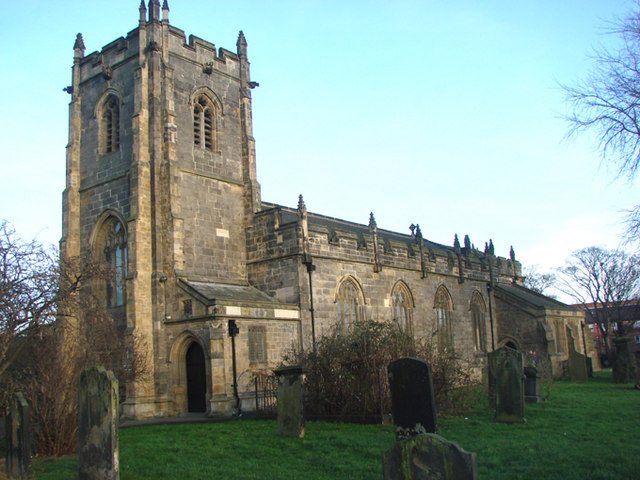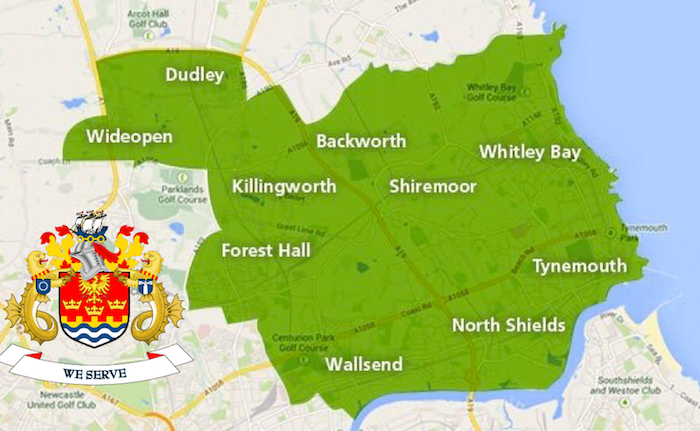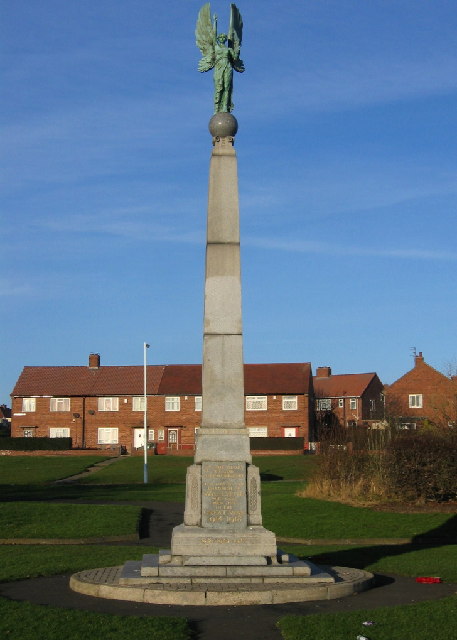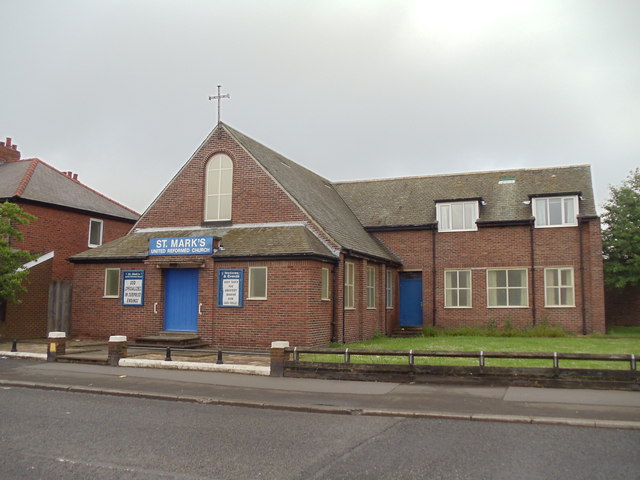Topics > Tyne and Wear > North Tyneside > Wallsend > Wallsend Parish, 1855
Wallsend Parish, 1855
Extract from: History, Topography, and Directory of Northumberland...Whellan, William, & Co, 1855.
WALLSEND parish comprises the townships of Howden Pans, Wallsend and Willington, whose united area amounts to 2,787 acres. It is bounded on the north and west by Long Benton parish, on the south, by the river Tyne, .and on the east by the parish of Tynemouth. The population in 1801, was 3,120; in 1811, 3,584; in 1821, 5,103; in 1831, 5,510; in 1841, 4,758; and in 1851, 5,721 souls. This parish stretches along the north bank of the Tyne, and is intersected by the Newcastle and North Shields Railway. Extensive coal mines exist in the neighbourhood, and the place formerly gave its name to an excellent variety of coal, but now the designation " Wallsend" is applied to all coal which passes over a sieve, whose meshes are five-eights of an inch asunder, without falling through.
HOWDEN PANS is a township and village in the above parish, the property of the River Tyne Commissioners, and John Brunton Falconer, Esq. The area, etc. of the township are included in the parish returns, and the rateable value is £1,412. The population in 1841, was 1,296; and in 1851, 1,276 souls. This township was noted in the 16th and 17th centuries for its extensive glass works, and afterwards for its numerous salt pans, but its principal support is now derived from the coal trade, large quantities being shipped for the metropolis and other places. During the American war, several "India-men" and frigates were built here. At present, the docks are chiefly used for building and repairing vessels employed in the Coal trade. Here is a large brewery which is carried on by John B. Falconer, Esq., and also all extensive covered ropery. THE VILLAGE of Howden Pans is situated on the Tyne, about five miles east by north of Newcastle. Here is an Independent Chapel, erected in 1845, at a cost of £400. It is a neat edifice, and possesses ample accommodation for 300 persons. Rev. William Stead, minister. The Primitive and Wesleyan Methodists have also chapels here.
The NORTHUMBERLAND DOCK, now in course of construction, will be formed by a straight river wall, running from Hayhole-point, to near Howden. The tidal basin will be two and a half acres in extent, and will contain about twenty feet of water during neap tides. The approach is particularly favourable, a bend of the river, leading to the entrance, while the position is admirably chosen to meet the requirements of coal shipping. Enormous quantities of coal are shipped at this immediate locality of the Tyne, amounting to a million and a quarter tons during the past year. This dock, when completed, will be capable of receiving the largest man of war, and a vessel like the " Duke of Wellington” may come into it and take her coals in. It will, be sufficiently capacious to receive 600 vessels at one time, and will be the largest colliery dock ever constructed. The estimated total cost is near £160,000, which is to be raised by the River Commissioners, upon the security of the revenue to be derived from the dock. The contract was taken in August 1853, by Mr. David Thornbury, a gentleman, who has been extensively engaged in constructing docks and sluices in the eastern counties. The coffer-dam was commenced in August 1853, and finished in April, 1854, and so perfect was its construction, that the contractor was able to set his excavators to work within a week. The foundation stone, of the mason work, was laid on the 12th September, 1854, and the docks are expected to be completed in about three years, from the commencement of the works. Mr. W. A. Brooks, is acting engineer, for the dock; Mr. Plews, of London, consulting engineer, for the River Commission; and Mr. Brooks, junior, resident engineer.
POST OFFICE, HOWDEN PANS, Luke Reay, Postmaster. -Letters arrive, from Newcastle, at 9-30, a.m. and are despatched thereto at 3-45 p.m.
| Atkinson Thos. plumber & brazier Barkor Alfred, cabinet maker Barras Alex. Dock House, Howden Bell William, grocer, Davidson Thos. block manufacturer, and mast maker; ho. Howden Dock Dodds John, butcher Elliott Robt. grocer and spirit merchant English Abraham, butcher Falconer John Brunton, Esq. brewer, malster and spirit merchant, Howden Brewery; ho. Picton House, Newcastle Farley Thos. marine store dealer Forest Andrew, boot and shoomaker Forster Edw. grocer and draper Kennedy David, joiner Knott John, butcher Minikin William, tailor Moffit William, surgeon Mordue Jane, grocer Morton James, pilot Plues Robert, confectioner Reay Luke, agent for the Hope, Life and Guarantee Association Robinson Danial, schoolmaster; ho. Willington Quay Robinson Robert, butcher Robson Matthew, grocer & druggist |
Rutter John, blacksmith Innkeepers Black Bull, Jane BrownGlobe, Henry Richardson Half Moon, James Twizell Queen's Head, William Scott Ship, Sarah Ridley Shipwright's Arms, Elizabeth Hudson Waggon, John Cook |
WALLSEND is a township and village in the parish of the same name, the property of the Dean and Chapter of Durham. The area of the township is included in the parish returns, and the rateable value is £6,287. The population in 1841, was 1,988, and in 1851, 2,161 souls. Wallsend is said to have derived its name from its position at the eastern extremity of the great Roman wall, which, commencing at the Solway Frith, terminated in a field a short distance to the east of the site now occupied by Carville House. For a detailed description of this wall, with its stations, etc., see the article "Roman Remains," page 23. From the ruins of a quay which have been distinctly traced, it is supposed by many that the Romans had a trading colliery here, and below Carville, where the Roman vessels discharged and received their cargoes sixteen hundred years ago, large fleets of "colliers" are now constantly loading with coals, which are brought by railways from the neighbourhood of Gosforth,. to the staiths upon the river's banks. In 1814, as some workmen were forming Fawdon Staith, at this place they discovered a quantity of Roman masonry and coins, a little above high water mark and. also a very curious cauldron for heating water. There are extensive lime-kilns in this township, the property of Mr. Joseph Mordue. Wallsend colliery was opened in 1777, and has been the scene of many dreadful accidents. A fearful explosion took place here in October, 1821, when fifty-two human beings were hurried into eternity. Another explosion occurred in June 1835, on which occasion twenty-six men and seventy-five boys lost their lives.
THE VILLAGE of Wallsend is pleasantly situated, about three and a half miles E.N.E, from Newcastle. It is large and well built, contains several superior houses, and has a spacious green in the centre. THE CHURCH dedicated to St. Peter, was erected in 1809, at an expense of about £5,000, on the site of the ancient church, which had become much dilapidated. The parish register commences in 1669, The living, a. perpetual curacy in the archdeaconry of Northumberland, and deanery of Newcastle, is returned at £289. The tithes were commuted in 1839, aggregate amount £69. 10s. 2d. due to the curate and £193 to the prebendary of the seventh canon of the Cathedral Church of Durham. Patrons the Dean and Chapter of Durham ; incumbent the Rev. John Armstrong. The PARSONAGE HOUSE, a neat stone edifice, erected in 1853,. is situated near the church.
This township contains a. Presbyterian Chapel, a Primitive Methodist Chapel, and two places of worship belonging to the Wesleyan Methodists.
THE PAROCHIAL SCHOOL adjoins the church. It is a good stone building erected in 1853, at a cost of £200, and possesses ample accommodation for 180 children. Isabella Shaw, teacher.
CARVILE HOUSE, the seat of Charles Rayne, Esq., occupies a commanding situation on the north bank of the Tyne.
POST OFFICE, WALLSEND, Tyzack Miller, postmaster. Letters arrive, from Newcastle, at 9-30 a.m. and are despatched thereto at 9 p.m.
| Adam Charles, academy Aitchinson James, surgeon Allen Jno. & Wm. manufacturing chemists Archbold Wm.& Co. colliery owners, Wallsend colliery Armstrong Rev. John, vicar, Vicarage Atkinson John, under viewer Bainbridge William, Esq. barrister Brooks John, shipowner Brown Leonard, Marine store dealer Carr John & Co. coke burners, Wallsend Quay Clarke George, colliery owner Coatsworth George, master mariner Cook Mr. Thomas Cook Thomas, alkali manufacturer Crumlie James, grocer, ship chandler, and marine store dealer, Wallsend Quay English John, butcher Fenwick Thomas, agent Forster Benj. grocer, and registrar of births and deaths for Wallsend district Gair William, ropemaker Gray Wm. John, ship owner and insurance broker Grey Thos. blacksmith, and agricultural implement maker Gallon Robt. joiner, cartwright, & builder Hall William W., tailor Harbitt Joseph, butcher Hann Robert, grocer Hedderley Wm. brazier & tin plate worker Hedley Matthew, schoolmaster Henderson John, tailor Hutchinson Ralph, ship smith, Wallsend Quay Jameson William, agent Johnson Mrs. Eleanor Losh William, Esq. Point Pleasant Milne Charles, druggist and grocer Moon Robert, gardener Moore Edward, grocer Mordue Joseph, vict. Davy Inn, brick and tile maker, and lime burner, Wallsend Quay and farmer, Wallsend Murray Matthew, draper Nelson Edward, agent Nelson John, shipowner |
Pauling Alexander, shopkeeper Innkeepers Bee Hive, William Graham Farmers Brewis Robert |
WILLINGTON, a township and village in Wallsend parish, is the property of Captain Bigge, of Linden, and Messrs. Ord, Collingwood, and Dalton. The acreage. of the township is returned with the parish, and the rateable value is £7,839. Population in 1841, 1,474; in 1851 ,2,284 souls. Matthew Bell, Esq., possesses extensive collieries in this township, which afford employment to great numbers of colliers, etc. A melancholy explosion, attended with an extensive loss of life, occurred on Monday, April 19th, 18il, at the "Big Pit," belonging to Matthew Bell, Esq., situated about midway between Newcastle and North Shields, when thirty two individuals were suddenly destroyed. How or where this awful disaster occurred must ever remain a matter of speculation. The solution put forward as the most probable, and as supported by concurrent testimony, was, that the whole was attributable to the neglect of a poor little boy, a trapper, who left one of the doors open, to play with two other boys close by. It is essential that these doors be shut, except at the very moment when the putter is passing, and in the present instance it was supposed that the boy propped open his door, that it remained thus for some time, and that the requisite ventilation was thereby prevented. The first intimation of danger was a tremendous noise, accompanied by a dense cloud of smoke, issuing from the mouth of the shaft, ·and a violent shock in the neighbourhood, resembling what might be supposed to proceed from an ·earthquake. As soon as the accident became known1 the relatives of those who had been engaged in the pit crowded around the place, manifesting in every look and action, the most intense anxiety. Two men and a boy, employed at some distance in the east headway were made sensible of their danger by the dust and wind which came upon them. Fortunately the after-damp was spent, and they reached the shaft in safety ; there they found that the stones and wood-work at the bottom were torn from their places and had fastened the cage, but, after much labour, they were rescued from their perilous position and conveyed to the top in safety. A body of workmen immediately descended the shaft, and laboured unremittingly, until they discovered the bodies of thirty-two of the sufferers. Three of these were alive when first discovered, but they shortly afterwards expired. Many of the bodies were in a sound state, indicating that their deaths had been caused by suffocation, but, in the majority of cases, they were mutilated, and presented a truly appalling sight. Some were so completely bruised and disfigured that their coffins had to be sent down into the pit, to prevent limb falling from limb, while being conveyed up the shaft. THE VILLAGE of Willington occupies an eminence above the Tyne, four miles east by north of Newcastle.
WILLINGTON QUAY, in this township, is a very improving place, situated on the Tyne, four and a half miles east by north of Newcastle. Ship-building, both in wood and iron, is extensively carried on here, by Messrs. Coutts and Parkinson, and Messrs. Thomas Adamson & Sons. There is also a patent ropery, and several other works.
POST OFFICE, WILLINGTON, George Nursay, Postmaster.-Letters are received twice a day and despatched once.
POST OFFICE, WILLINGTON QUAY, Elizabeth Bainbridge, Postmistress.-Letters arrive at 9-30 a.m., .and are despatched at 4 p.m.
|
Adamson Thomas & Sons, shipbuilders and shipowners, Patent Slip yard, Willington Quay |
Morton Matthew, pilot, Willington Quay Inns and Public Houses Albion, Peter Park, Willington Quay |

Co-Curate Page
Church of St Peter
- Overview Map Street View The Church of St. Peter in Wallsend was built in 1809 and extensively modified in 1892. The church is Grade II* listed on the National Heritage …













